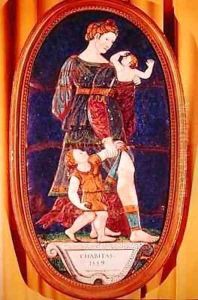Pierre I Courteys Paintings
Pierre I Courteys was an eminent Limoges enamel painter, particularly active during the mid-16th century. While the exact dates of his birth and death are not precisely known, his artistic activity is well documented from the 1530s through to the 1580s. Courteys was part of the vibrant Renaissance movement that swept across Europe, and his work is often associated with the French Renaissance, a period marked by a flowering of arts and culture under the influence of classical antiquity.
Courteys specialized in the production of painted enamels, a technique that involves fusing powdered glass to a metal substrate through high-temperature firing. This method was perfected in Limoges, France, which became renowned for its enamel works. Courteys' enamels are distinguished by their intricate detail, vivid colors, and often complex iconography, drawing from religious, mythological, and occasionally secular themes.
His works were highly prized among the European elite, and he contributed significantly to the reputation of Limoges enamels. Courteys was known for his innovative use of color and for the depth and perspective he achieved in his pieces, which was a remarkable feat given the flatness of the enamel medium. Some of his enamels are preserved in major museums around the world, showcasing his mastery over this challenging and delicate art form.
Despite the admiration his works have garnered, details about Courteys' life remain scarce. What is clear, however, is the impact of his artistic contributions. He played a key role in the development of the unique Limoges enamel painting style, which would influence generations of enamel painters. His legacy is a testament to the creative and technical achievements of the French Renaissance, making Pierre I Courteys a significant figure in the history of European art.


